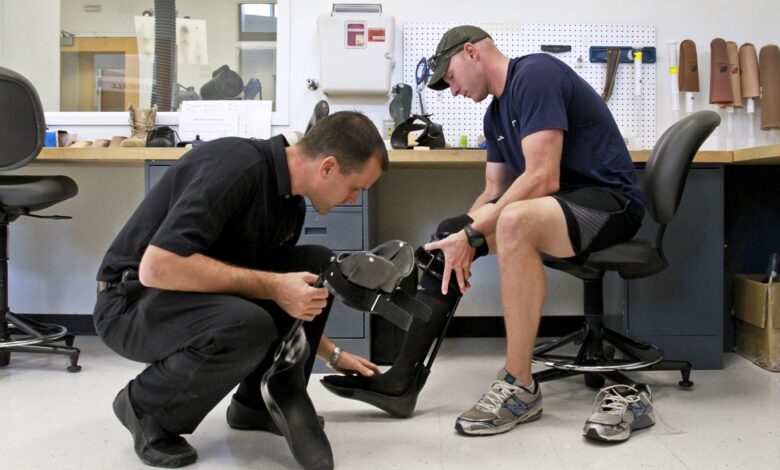What You Need To Know From Westcoast Brace And Limb

Westcoast Brace and Limb, headquartered in Tampa, Florida, has developed a cover for prosthetic socks that addresses a common patient need. Lint from the frayed edges of socks can accumulate inside a prosthetic pin lock mechanism and interfere with suspension.
Ed Browne, a high school football star with Big Ten aspirations, lost his leg in a train accident. With grit and determination, he turned to physical therapy and his prosthetic team at Spaulding Rehabilitation Hospital in Boston for help.
What are prosthetic toes?
Prosthetic toes replace your missing or weakened toe and provide passive functionality that helps you resume daily activities like typing, walking, and playing music. It also restores a physical and aesthetic balance to your body.
Prosthetic toes are based on the anatomy of your suitable foot, allowing you to move as you did before an accident or surgery. This will enable you to participate in your favorite sports, including athletic events.
Westcoast Brace and Limb has provided orthotic and prosthetic patient care since 1981. We are dedicated to ensuring our patients have the proper design, function, comfort, and aesthetics to live their best lives after an injury or illness.
Prosthetic toes consist of a foot shell, toe cap, and nail. The shell is shaped like your remaining toes and can have an acrylic or silicone nail attached. The caps are designed to fit over your residual toes and can be painted to match your nails and skin color. The prosthetic foot can be flexible and rigid as a traditional carbon foot.
How Do Prosthetic Toes Work?
A prosthetic foot is a custom-made device that fits over your residual limb and allows you to walk. During rehab, you will wear a temporary prosthetic to help you adjust to your new foot before using a permanent one once the residual limb heals.
A prosthetic foot’s internal frame or tower is usually made of light carbon-fiber composite rods matched to skin colors and then covered with a plastic or foam material. Many prosthetic feet move in two or three axes to allow more natural walking on uneven surfaces.
Some prosthetic feet are powered by sensors that connect to electrodes on your residual limb to read muscle contractions and send signals to move the prosthetic foot. These are typically powered feet and weigh more than other prosthetic feet. They also may have additional mechanical clicking sounds and a microprocessor that extrapolates information from the environment or user input and adapts the performance of the ankle/foot.
What are the Benefits of prosthetic toes?
There are many prosthetic feet available to meet individual needs. A SACH foot can conform to uneven terrain and provide support and balance. It is lightweight and compresses easily. This makes it suitable for most shoes.
An articulated single-axis foot allows the ankle to move up and down, which enhances knee stability. It is a good option for individuals with moderate activity levels.
Dynamic-response feet have a spring that reacts to changes in environmental conditions, reducing impact forces on the residual limb and sound side leg. It also increases comfort during walking and provides automatic heel height adjustments.
A dynamic-response foot has been shown to reduce the energy required for stair climbing. This type of foot is ideal for athletes who want to be able to run or play sports that require stairs.
What are the Risks of prosthetic toes?
Losing a toe significantly impacts foot and knee function, leading to pain and other problems. Prosthetic toes can help reduce this pain.
The most common risk of prosthetic toes is infection. Keeping the stump clean and dry and changing socks are vital. It is also essential to avoid putting too much pressure on the stump until it is healed.
Another risk is tripping. Reduced toe clearance during the swing phase of walking may be to blame. The Unity suspension system that Westcoast Brace and Limb uses is an appropriate prosthetic suspension that may increase swing toe clearance.




